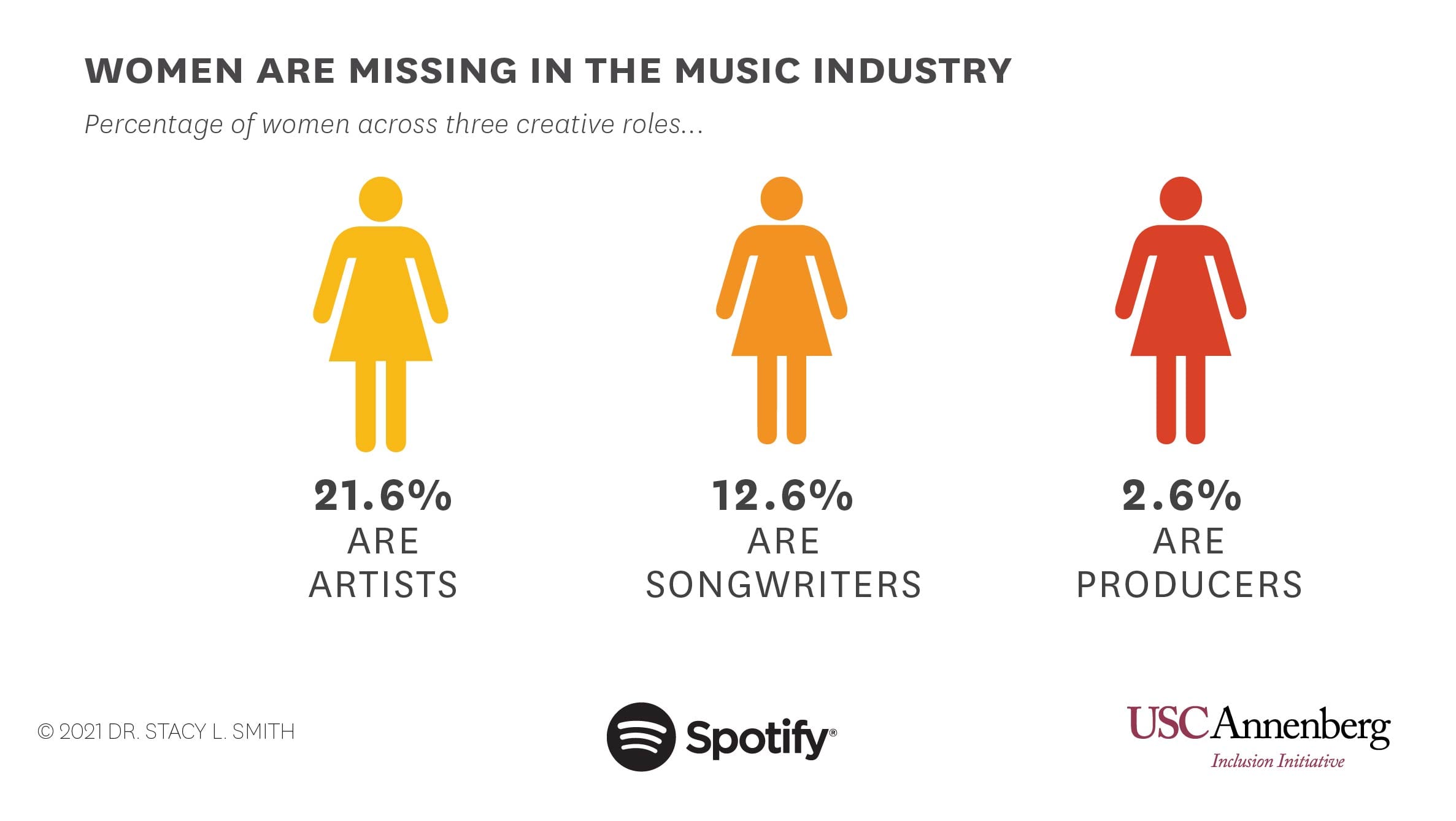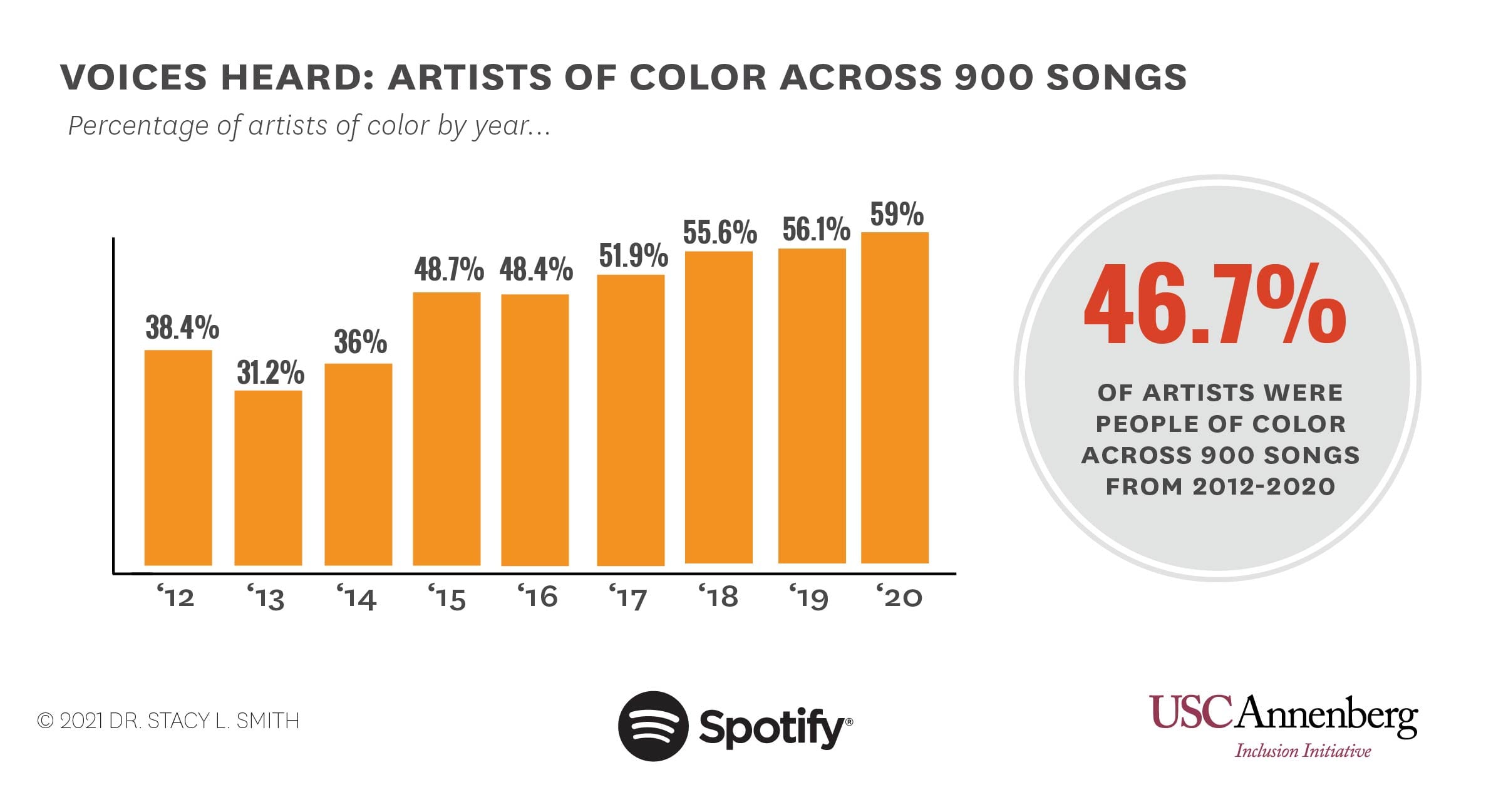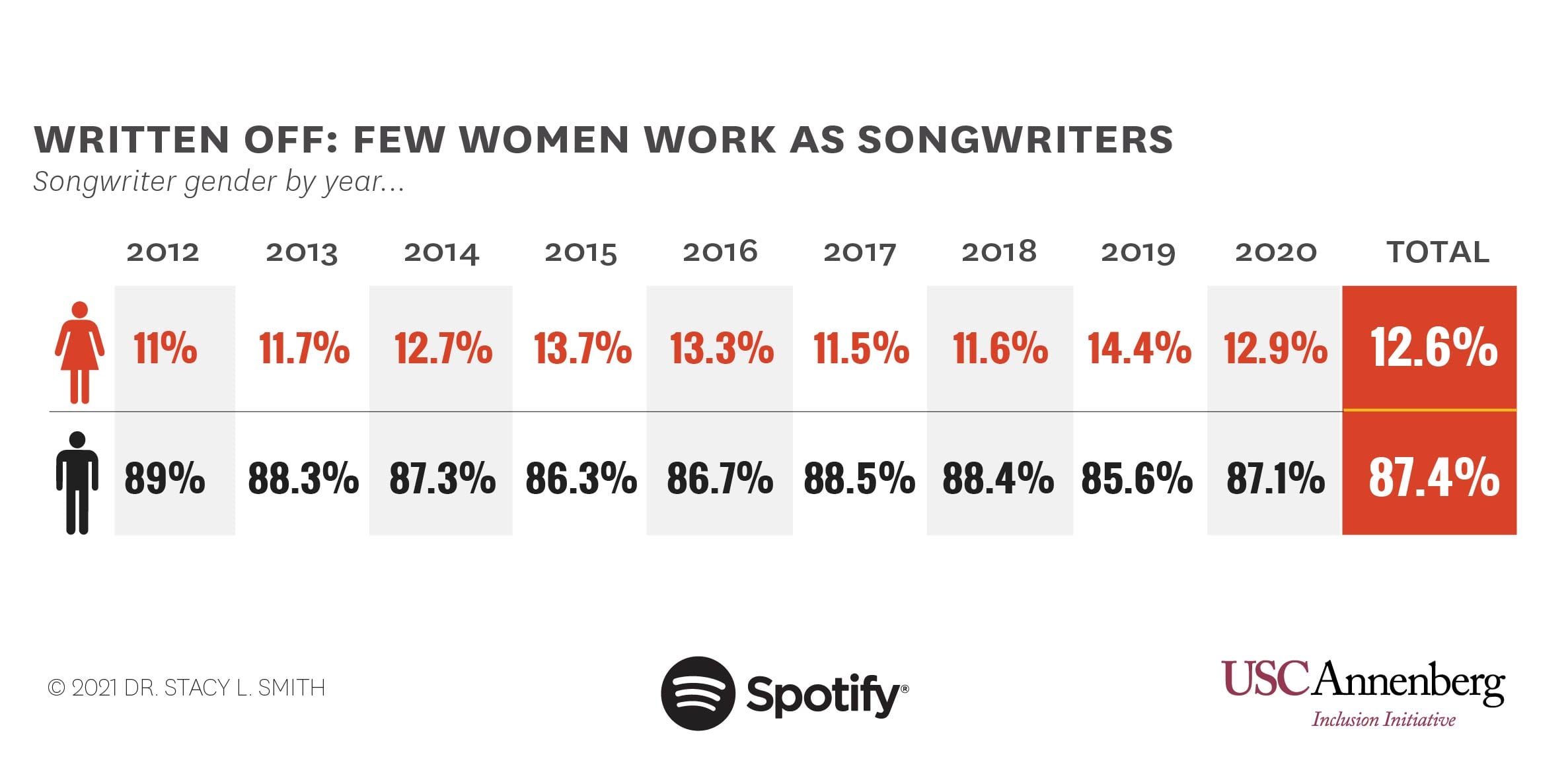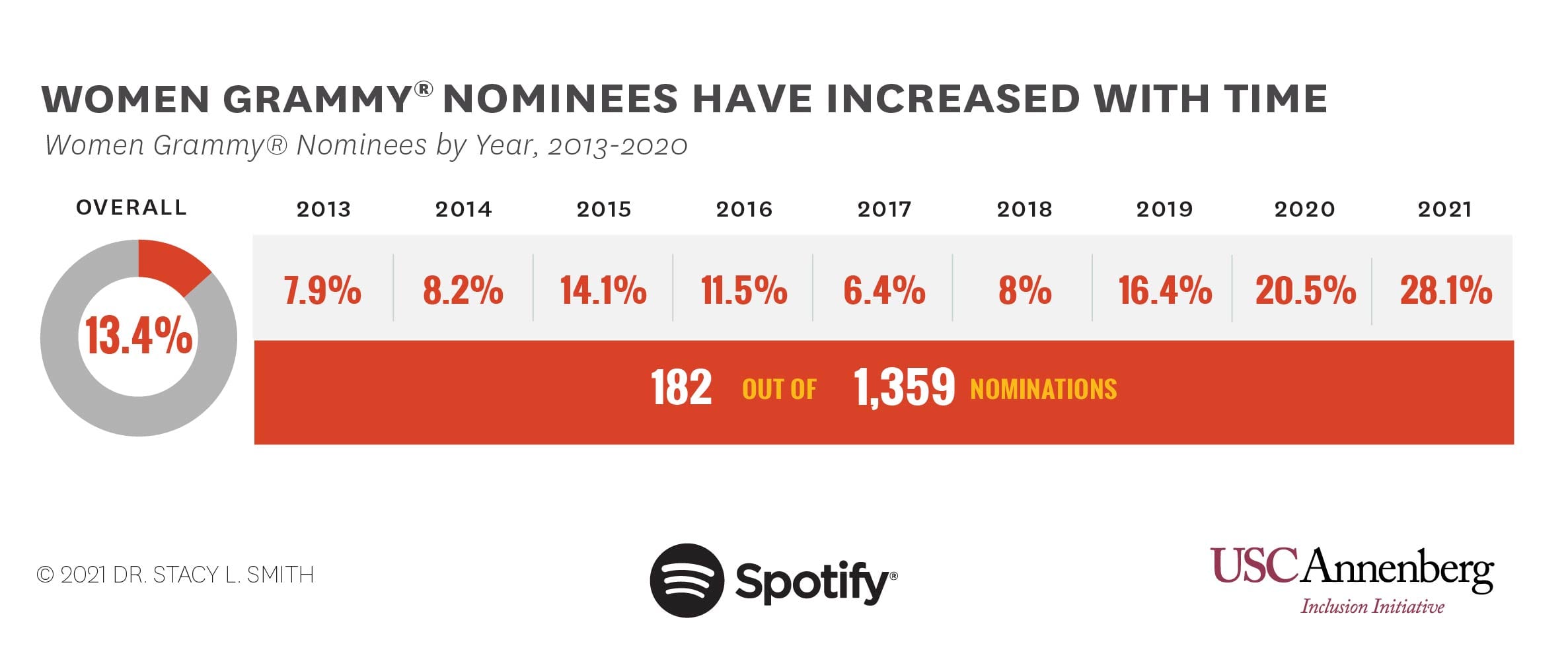In a study released by USC’s Annenberg Inclusion Initiative, data shows that significant progress has not been made for inclusion for women in music. Underrepresented racial and ethnic groups have seen an uptick in inclusion.
The report assessed gender and race/ethnicity of artists, songwriters, and producers across the 900 most popular songs from 2012 to 2020, based on the Billboard Year-End Hot 100 Chart. Grammy nominations were also evaluated by gender and race/ethnicity across five categories: Record of the Year, Album of the Year, Song of the Year, Best New Artist, and Producer of the Year.
The study was conducted by Dr. Stacy L. Smith, Dr. Katherine Pieper, Marc Choueiti, Karla Hernandez and Kevin Yao. Read the full report here.
Below are some of the key findings:
According to the study, 173 artists appeared on the Billboard Hot 100 Year-End chart in 2020. Of those, 79.8% were men and 20.2% were women, making 2020 not meaningfully different than the percentage of female artists on the Billboard Hot 100 Year-End chart in recent years. The highest percentage of women artists represented on the chart was in 2016, when 28.1% of artists were women.
Women artists were most prevalent in the pop genre (32%) over the last nine years, and least prevalent in hip-hop/rap (12.3%), where 7.1 men charted for every one woman artist.
The top-performing artist of the last nine years was Drake, with 41 songs. On the women’s list, Nicki Minaj and Rihanna prevailed with 21 songs each. Ten of the top 13 artists of the past nine years are from underrepresented racial/ethnic groups.
Of 173 artists in 2020, 59% were underrepresented and 41% were white. 2020 was the fourth consecutive year where the percentage of underrepresented artists increased. Underrepresented artists were most likely to appear on the charts in the genres of R&B/soul (92.1%), hip-hop/rap (87.3%), and pop (36.3%).
Songwriters:
Of the total of 449 songwriters that were credited in 2020, 87.1% were men and 12.9% were women. Across all nine years, 12.6% of songwriters were women, a ratio of seven male songwriters to every one female songwriter.
According to the study, women songwriters were most likely to work on dance/electronic songs (20.5%) and pop (18.7%) music, and least likely to work in hip-hop/rap (6.3%), R&B (9.1%) or country (10.6%).
Producers:
Of the 198 producers credited in 2020, 98% were men and 2% were women. Across a six-year sample (2012, 2015, 2017, and 2018-2020), a total of 1,291 producers were credited. Of these, 97.4% of producers were men and 2.6% were women. This is a ratio of 38 men to every one woman producer.
Out of the 33 women credited as a producer across the six years studied, nine were women of color. Only one woman of color was credited as a producer in 2020—Mariah Carey received a producing credit for “All I Want for Christmas is You,” a song first released in 1994.
Grammy Nominations: 2013 to 2021:
Of the 1,359 individuals that were nominated for a Grammy Award between 2013 and 2021, 13.4% were women and 86.6% were men. This is a ratio of 6.5 men nominated for every one woman nominee.
Women were most likely to be nominated for the Best New Artist award, followed by Song of the Year. Across nine years, roughly 10% or less of the nominees for Record of the Year or Album of the Year have been women. Only one woman has been nominated for Producer of the Year across the entire sample.
From 2020 to 2021, the percentage of women Grammy nominees increased significantly and reached a nine-year high as 28.1% of nominees were women. There were nearly four times as many women nominated for a Grammy Award in 2021 in the five major categories evaluated as there were in 2013.
The post Annenberg Inclusion Initiative Study Reveals No ‘Meaningful’ Change For Women In Recorded Music appeared first on MusicRow.com.




